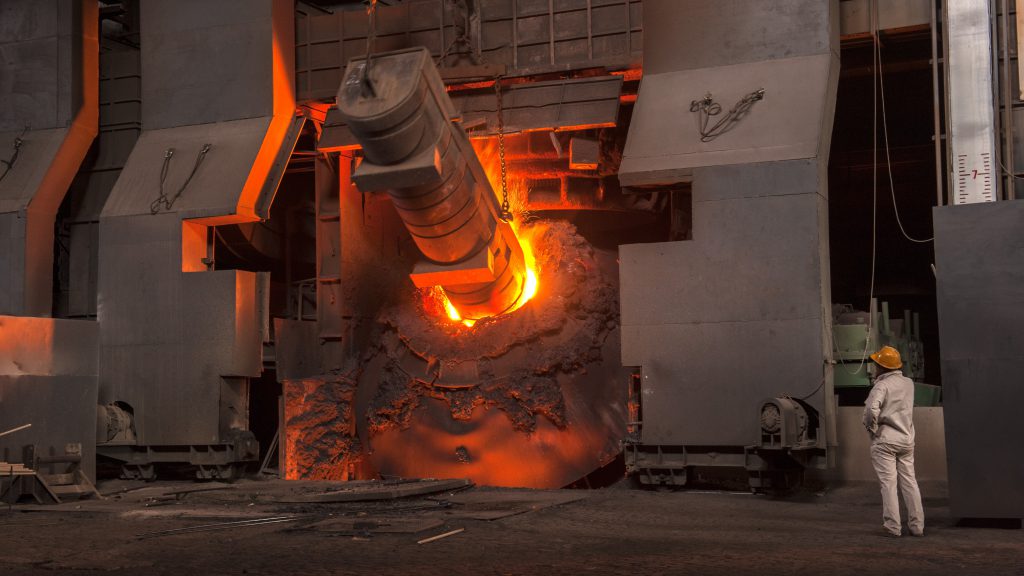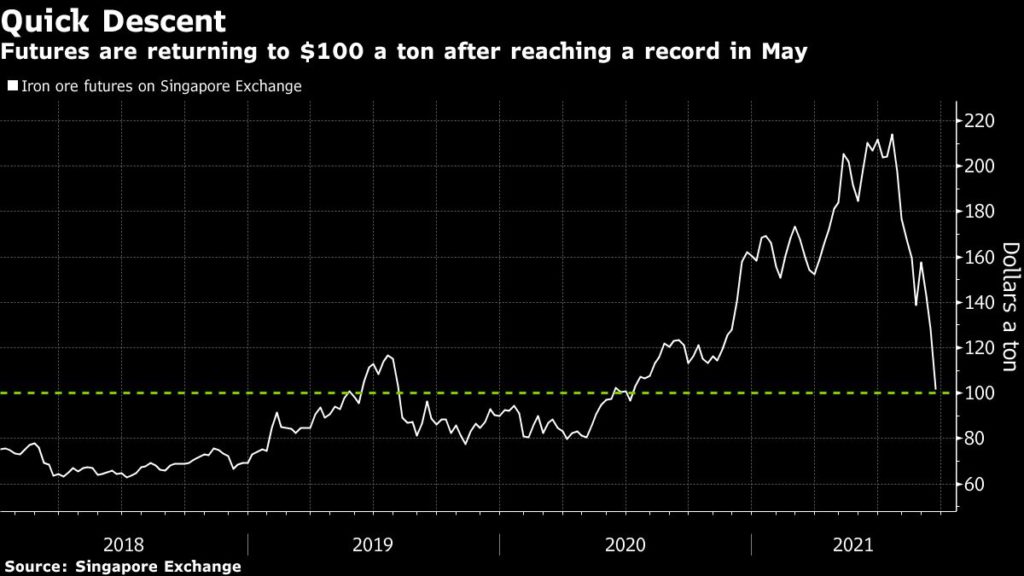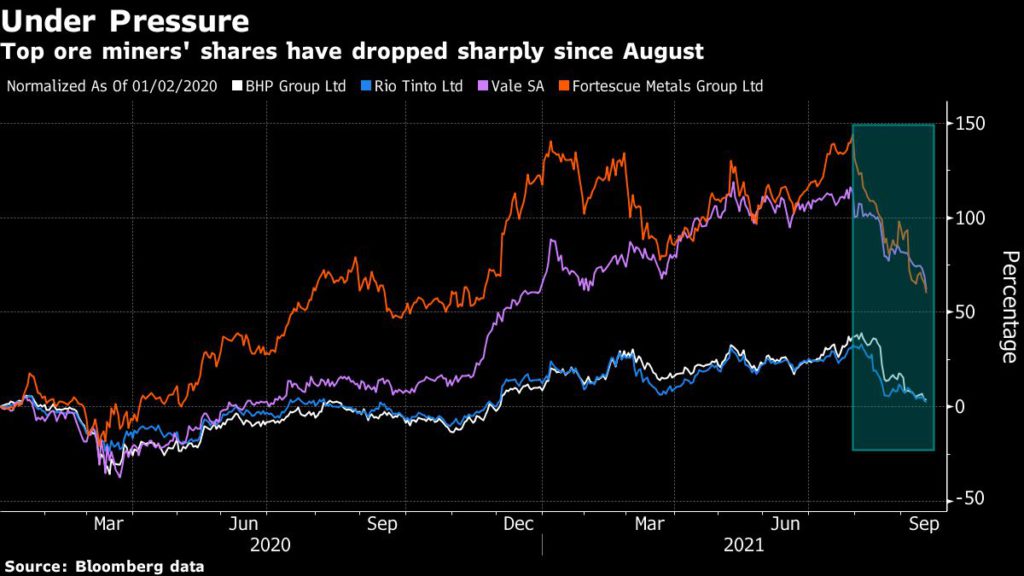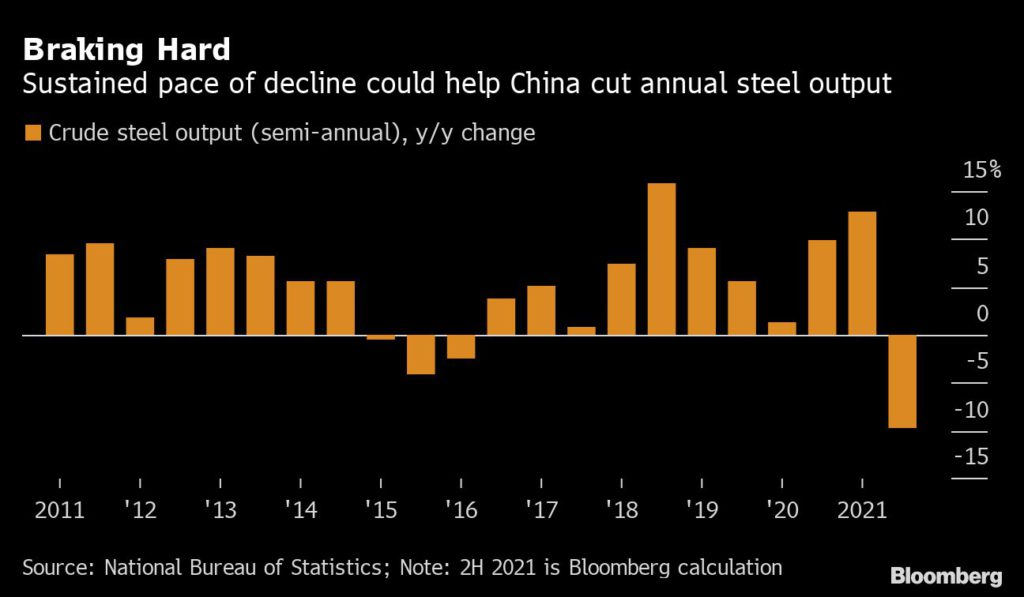
The iron ore price sank below $100 a tonne on Friday for the first time since July 2020, as China’s moves to clean up its heavy-polluting industrial sector spurred a swift and brutal collapse.
The regulator said steel mills in those regions would be urged to cut production based on their emission levels during the campaign from October until the end of March.
“Stringent production controls have driven market prices lower recently, and pessimistic outlook for demand have intensified,” analysts with SinoSteel Futures wrote in a note.

Prices have more than halved since peaking in May as the world’s biggest steelmaker intensifies production curbs to meet a target for lower volumes this year, and a sharp downturn in China’s property sector impacts demand.
Iron ore’s slump makes it one of the worst-performing major commodities and a notable outlier in a broader boom that’s seen aluminum soar to a 13-year high, gas prices jump and coal futures surge to unprecedented levels.
Iron ore futures have slumped more than 20% this week and were trading at $99.55 a tonne Friday morning in New York.
The decline “has played out faster than expected,”, said UBS Group AG. UBS predicts prices will average $89 next year, a 12% cut to its previous forecast.
Iron ore producers Rio Tinto Group, BHP Group, Vale SA and Fortescue Metals Group Ltd. have seen their shares tumble.

Meanwhile, steel prices are still elevated. The market remains tight of supplies as China’s production cuts significantly outpace declining demand, according to Citigroup Inc.
Spot rebar is near the highest since May, albeit 12% below that month’s high, and nationwide inventories have shrunk for eight weeks.

China has repeatedly urged steel mills to reduce output this year to curb carbon emissions. Now, winter curbs are looming to ensure blue skies for the Winter Olympics.
(With files from Reuters and Bloomberg)
No comments:
Post a Comment